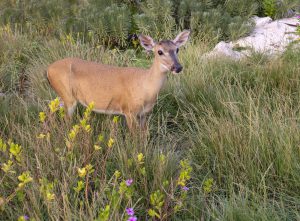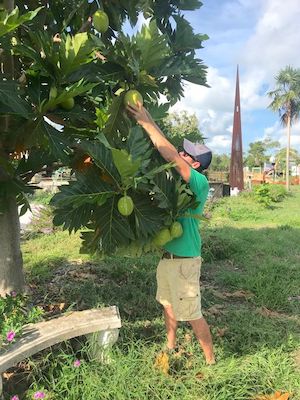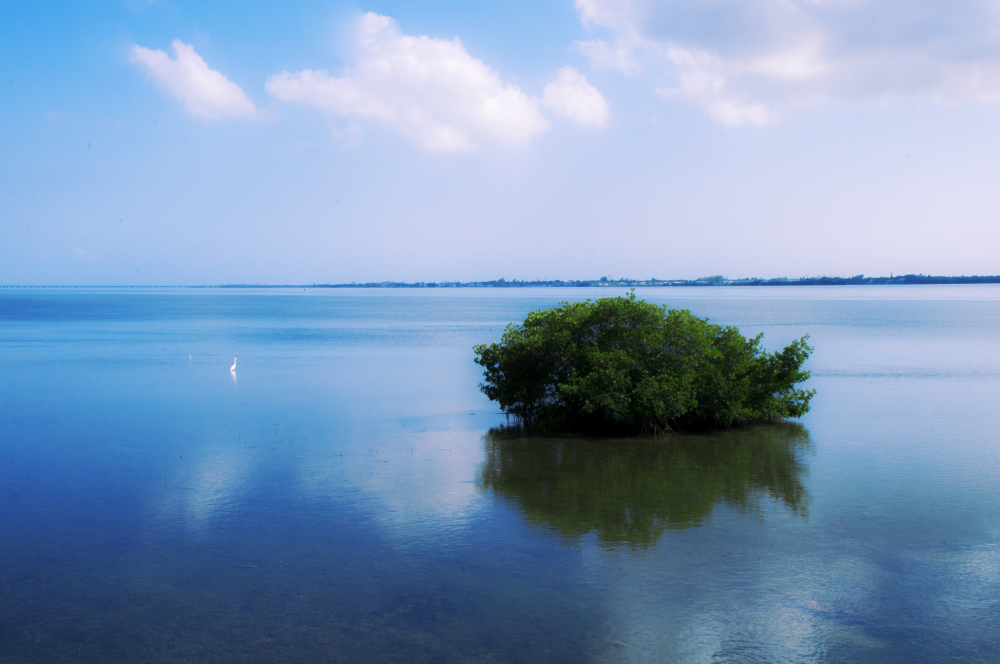Big Pine & the Lower Keys are home to two national wildlife refuges, part of a national marine sanctuary and a stunning state park — and the easygoing area has a unique environmental focus that inspired the designation of “the Natural Keys.” In other words, the Lower Keys are an ideal place to unwind, relax and reconnect with nature.

Key deer, shy miniature creatures that live primarily on Big Pine Key, are protected within the National Key Deer Refuge. (Photo by Rob O’Neal, Florida Keys News Bureau)
Even the restaurants are laid-back and casual. Many offer a “fish camp” type of atmosphere, with picnic tables set amid open-air beauty.
And no visit is complete without encountering the lightly populated area’s native wildlife — especially the tiny endangered Key deer that are found only in the Florida Keys.
Escape to Serenity: The 9,000-plus-acre National Key Deer Refuge has freshwater and saltwater marsh wetlands, pine rockland forests and tropical hardwood hammocks. The refuge was established in 1957 to protect the tiny Key deer. The smallest subspecies of white-tailed deer, the graceful creatures are about as big as a mid-sized dog and can be found only in the Keys. Stop at the Nature Center at 30587 Overseas Highway on Big Pine Key to acclimate to the Lower Keys, and spend a peaceful interval strolling the refuge’s trails.
Escape on the Water: Folklure Charters, with operations out of Summerland Key and Big Pine Key, is a Blue Star operator offering four-, six- and eight-hour offshore, reef and wreck fishing charters. Established by the Florida Keys National Marine Sanctuary, the Blue Star program recognizes operators committed to responsible and sustainable fishing, snorkeling and diving practices. Folklure clients can even conduct fish-tagging activities to assist the Dolphinfish Research Program.

After discovering a neglected Big Pine Key fruit grove designed by recluse Adolf Grimal, Patrick Garvey has brought it back to life as a unique breadfruit grove.
Escape into Renewal: The historic subtropical fruit grove called Grimal Grove was established by eccentric inventor and recluse Adolf Grimal, who amassed hundreds of rare fruit trees. Today under owner Patrick Garvey’s stewardship, the secluded spot is the continental United States’ only breadfruit grove with a focus on propagation, production and research. Take a tour and meander around the fascinating Big Pine Key oasis located at 258 Cunningham Lane.
Escape into Nature: Tranquil Bahia Honda State Park, located oceanside at mile marker 37, is home to two of the Florida Keys’ best “escapism” beaches. The picturesque park features picnic and camping facilities, rental cabins, kayaking, daily snorkeling tours to Looe Key Reef, a marina and nature trails. A nature center introduces park visitors to the island’s plants and sea life. Railroad magnate Henry Flagler’s historic efforts to build a railroad to Key West in the early 1900s turned the island of Bahia Honda Key into a subtropical destination. Visitors can climb a section of the park’s historic former railroad bridge to experience sweeping panoramas of clear turquoise water and aqua skies.
Escape to a Hidden Haven: Tucked away on No Name Key is the No Name Pub, known for its casual atmosphere, delicious shrimp pizzas and tasty smoked fish dip. It’s worth the roundabout adventure of driving to 30813 Watson Blvd. to discover the rustic, ramshackle venue whose interior walls are plastered with autographed dollar bills. The wooden structure dates back to 1931, when it was a general store and a bait and tackle shop.
Looking for more ways to embrace the serenity and relaxed vibe of the Lower Keys? Just click here — and then start planning your escape to this “low key” region.

